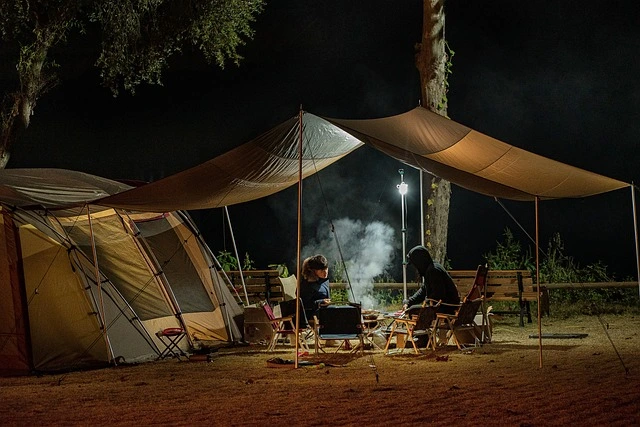Choosing Sustainable Camping Equipment for Winter: Tips for the Eco-Friendly Camper
Camping in winter can be a magical experience, offering serene landscapes and a peaceful retreat into nature. However, enjoying the great outdoors during colder months requires thoughtful preparation, especially when it comes to choosing your camping equipment. Opting for sustainable camping gear not only enhances your experience but also minimizes your environmental impact. This guide will help you make eco-friendly choices for your winter camping adventures.

The Importance of Sustainable Camping Equipment
Sustainable camping equipment focuses on reducing waste, conserving resources, and minimizing the carbon footprint associated with outdoor activities. By choosing eco-friendly gear, you contribute to the preservation of natural habitats, promote sustainable practices, and enjoy the benefits of high-quality products often made from durable, recycled, or organic materials.
Tips for Choosing Sustainable Camping Equipment for Winter
1. Opt for Insulated and Eco-Friendly Sleeping Gear
A good night’s sleep is essential for winter camping. When selecting sleeping bags and pads, consider the following:
- Material: Look for sleeping bags made from recycled materials or organic cotton. Brands that use down insulation often source it ethically, ensuring animal welfare.
- Eco-Friendly Sleeping Pads: Choose sleeping pads made from sustainable materials like natural rubber or recycled foam. These options provide insulation and comfort while being kinder to the planet.

2. Invest in a Quality, Durable Tent
Your tent is your home away from home, especially in winter. Here’s how to make a sustainable choice:
- Material: Look for tents made from recycled or organic fabrics. Brands that prioritize sustainable practices often use water-based coatings instead of harmful chemicals.
- Longevity: Invest in a high-quality tent that will last for years. A durable tent reduces waste and is often more cost-effective in the long run.

3. Choose Reusable Cooking Gear
Cooking in winter requires reliable equipment that minimizes waste. Here are some sustainable options:
- Stainless Steel Cookware: Opt for durable, reusable cookware made from stainless steel, which is lightweight, easy to clean, and long-lasting.
- Portable Solar Ovens: Consider using a solar oven for cooking during the day, taking advantage of natural sunlight while conserving fuel.

4. Use Biodegradable and Eco-Friendly Products
From soaps to food wraps, it’s essential to minimize your impact on the environment:
- Biodegradable Soap: Use eco-friendly, biodegradable soaps for washing dishes and yourself. Always follow Leave No Trace principles by washing at least 200 feet away from water sources.
- Reusable Food Wraps: Replace single-use plastic wraps with reusable beeswax or silicone food wraps. They keep your food fresh while reducing plastic waste.

5. Select Eco-Friendly Clothing Layers
Staying warm in winter requires proper layering. Choose sustainable clothing options that also keep you comfortable:
- Merino Wool: This natural fiber is biodegradable and regulates temperature well, making it perfect for winter layers. Look for brands that source wool ethically.
- Recycled Synthetic Materials: For waterproof outer layers, consider jackets made from recycled polyester or nylon. These materials provide warmth and protection from the elements while reducing waste.
Tips for Sustainable Winter Camping Practices
- Plan Your Trip: Optimize your route and minimize travel distances to reduce your carbon footprint.
- Practice Leave No Trace: Follow the Leave No Trace principles to minimize your impact on the environment. This includes packing out what you pack in and respecting wildlife.
- Educate Yourself: Learn about the local ecosystem and the best practices for camping in winter conditions. Understanding your surroundings will help you make informed decisions.

Conclusion
Choosing sustainable camping equipment for winter not only enhances your experience but also protects the environment. By selecting eco-friendly gear and following sustainable practices, you can enjoy the beauty of nature while minimizing your ecological footprint. With thoughtful preparation and a commitment to sustainability, your winter camping adventures can be both memorable and responsible.
Hope It was great information for you so Follow us.
FAQs
Q: What type of sleeping bag is best for winter camping?
A: Look for a sleeping bag rated for low temperatures, made from eco-friendly materials like recycled fibers or ethically sourced down.
Q: How can I keep my food warm while winter camping?
A: Use insulated food containers or a portable stove, and consider wrapping food in blankets for added warmth.
Q: Are there specific brands that focus on sustainable camping gear?
A: Yes, many brands prioritize sustainability, such as Patagonia, REI, and The North Face, offering eco-friendly options for camping gear.
Q: How can I find eco-friendly camping sites?
A: Research parks and campgrounds that have sustainability certifications or practices in place, and consider less crowded, pristine natural areas.
Q: Is winter camping safe?
A: Yes, with proper preparation and equipment, winter camping can be safe. Always check weather conditions, and plan for emergencies.
